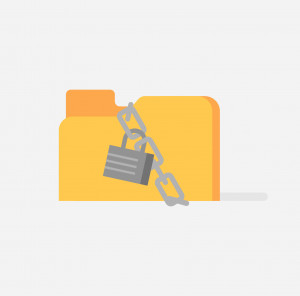
5 ways to improve cybersecurity
Cybersecurity is important. According to the 2018 Privileged Access Threat Report, 59 percent of UK organisations have possibly or definitely suffered an insider breach in the last year.
An insider threat brings up images of a double agent in your business. But it most often isn’t that. An insider threat can be as simple as an employee opening a phishing email. Or leaving their computer unlocked in a public area. Even the use of unsecure public Wi-Fi or not keeping devices and software up-to-date can be risky.
A cybersecurity breach not only affects your data. It affects your business reputation and customer relationships. It also costs not only time, but money in recovery, fixes, and fines. According to Cybersecurity Ventures, cybersecurity threats are expected to cost companies $6 trillion worldwide by 2021.
IT managers aren’t the only ones who need to care about cybersecurity. Every employee should care about it. All the way from the C-level to frontline workers, everyone needs to become a cybersecurity champion.
By improving security on all levels, you’re winning employee and customer trust. Here are some simple tips to face these threats head on.
-
Train your staff
Perhaps the most obvious. Training and introducing best practices will help mitigate breaches. Find courses, whether online or in person, that will educate every member of the team.
This includes recognising and handling phishing or spoof emails, data protection, and safe online and device behaviours. Make sure you include refresher training periodically too.
58% of breaches are caused by human error.
-
Email security
Having access to emails on any device is a great benefit for mobile working. However, you should never sacrifice security for convenience.
An email client such as Microsoft 365 can automatically distinguish between spam, phishing, and real emails, attachments, and links. It also has the tools to secure data and protect against threats. Therefore, lowering compliance risks and costs.
23% of phishing attacks are successful due to people opening the messages.
-
Up-to-date device policies
Cybersecurity threats don’t just come through your inbox or online. Make physical security just as high a priority by outlining best practices to keep devices safe.
All work-connected devices should have multi-factor authentication. Create protocols so if there’s a missing or compromised device, everyone knows who to contact and the technical needs.
67% of IT security practitioners can’t detect which employees are using unsecure devices.
-
Update your software

It is critical everyone in your organisation keeps their software up to date. Security updates happen automatically if you use cloud-based software. If your organisation hasn’t moved to the cloud, you can still automate updates and push them out to your employees.
Encourage responsibility in your team for installing updates on their own machines by having software that prompts users to install updates.
-
Identify weak links
Regardless of all the safeguards you have in place, training and having confidence in your employees to use tools and technology is important. You need to make sure you keep training. You also need to ensure you highlight the importance of cybersecurity continuously.
This way, your employees will be confident to recognise threats before they get caught out. In fact, they will be empowered with the information they need to not take risks.
[msce_cta layout=”image_center” align=”center” linktype=”blue” imageurl=”http://approjects.co.za/?big=en-gb/industry/blog/wp-content/uploads/sites/22/2018/05/Win17_CDOC_1012-v.3-1.jpg” linkurl=”http://approjects.co.za/?big=en-gb/business/do-more/secure-business/” linkscreenreadertext=”Weed out the weak links in your security that leave your company vulnerable to expensive breaches” linktext=”Weed out the weak links in your security” imageid=”7102″ ][/msce_cta]





